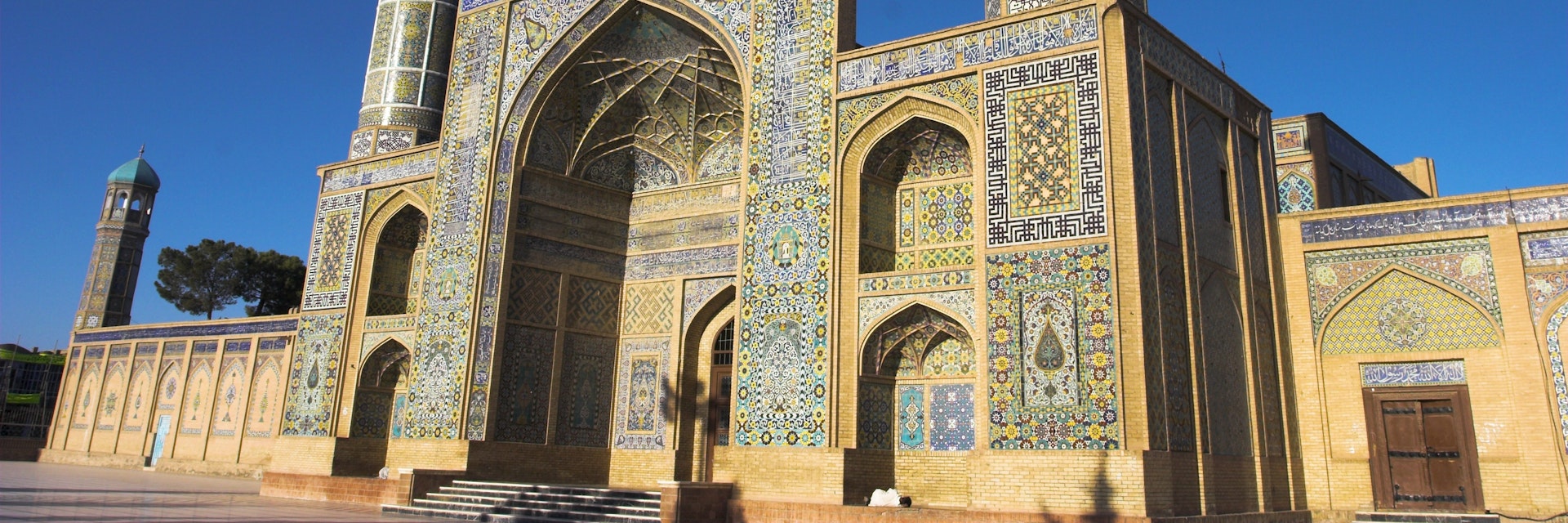Over 800 hundred years old, Herat’s Friday Mosque is Afghanistan’s finest Islamic building, and one of the greatest in Central Asia. A master class in the art of tile mosaic, its bright colours and intricate detailing are an exuberant hymn in praise of Allah. Most visitors enter the mosque via the park on its eastern side, which leads up to a huge and richly tiled façade. The entrance corridors are to either side of this, but they are frequently locked outside the main prayer hours, forcing visitors to gain access to the mosque proper via the small street entrance on its northern wall. This is actually a more atmospheric choice, as the cool dark of the entrance corridor suddenly gives way to a bright sunburst of colour as you enter the main courtyard. Don’t forget to remove your shoes at this point. The mosque is laid out in a classical plan of four iwans (barrel-vaulted halls) with arcaded walls around a central courtyard nearly 100m long. Two huge minarets flank the main iwan. Almost every square centre is covered in breathtaking mosaic, surrounded by blue bands of Quranic script. Only the simple whitewash of the iwans adds a note of modesty. The minarets, with their repeated bands of stylised flowers, arabesques and geometric patterns are simply dizzying. The mosque was originally laid out by the Ghorid Sultan Ghiyasuddin in 1200. Originally it would have had quite a different appearance, as the Ghorids preferred plain brick and stucco decoration. The Timurids restored the mosque in the 15th century and introduced the bright mosaic, but by the early 20th century so much of this had been lost that visitors remarked on the mosque’s dullness. The lavish tiling that now covers the mosque is the product of the mosque’s tile workshop, an ongoing restoration project since the 1940s. While many of the mosaics are based on Timurid originals, the workshop has also introduced its own designs, colours and calligraphy. This traditional-meets-modern approach has led to the creation one of the gems of contemporary Islamic abstract expressionism. The workshop is in a courtyard to the left of the main portal entrance in the garden – ask to visit it at the small office of the Ministry of Information, Culture and Tourism, just inside. The courtyard also contains one of the few remnants of the original Ghorid decoration, overlaid with Timurid tiling – a demonstration of the continuum of artistic styles that the mosque has witnessed. The craftsmen are normally happy to show off their work, from glazing the raw tiles to laying out the intricate mosaics. It’s normally not a problem to take photos in the mosque, but this should be avoided during prayer times. Early morning is the best time to catch the light on the tiles. Donations for the mosque’s upkeep can be placed in the ceremonial bronze cauldron in the eastern arcade. Cast in the 13th century, it would have originally been filled with sweet drinks for worshippers on religious holidays.

www.jupiterimages.com